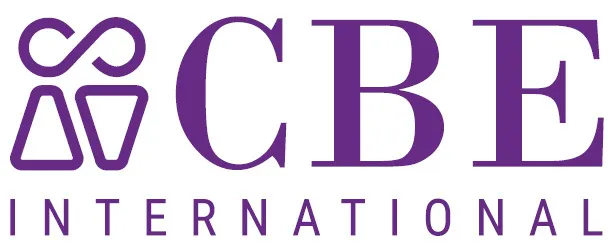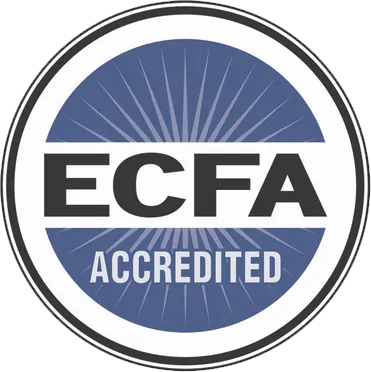As an intern with CBE International, I have had the delightful opportunity of creating a radio series called Women in Scripture and Mission. Women are highlighted in short radio spots, and then listeners are directed to more detailed information about these women who are an important part of the backbone of our faith. My interest in such women was sparked several years ago as I assisted my daughter with her homework.
Paula: Monastic, Philanthropist, Translator
I first read of Paula when I was helping my seventh-grade daughter study for a history test. At that time I was a seminary student, and all seminary students know that the brilliant scholar and linguist Jerome wrote the Latin Vulgate, the longest lasting Bible translation in all of history. Yet here in my daughter’s secular seventh-grade history book was Paula—a person I had never heard of—who had evidently helped Jerome write the Latin Vulgate! Surely this secular textbook had not included a brilliant Christian woman scholar whom my egalitarian seminary had failed to even mention?
I began to dig, study, and research, and to my chagrin I discovered exactly what I feared: the secular world remembers Christian history better than our own seminaries. When I asked my professor why we studied only a few token women, he said the courses were too short to include more women. Wow. But MacMillan’s seventh-grade history textbook could. It was clear that if I wanted to know the true history of the church, I would need to discover it myself.
Not surprisingly, I began with Paula of Rome (347–404). A mother of five who was widowed in her early thirties, Paula joined a study with other wealthy widows in Rome, where she became a Christian. Here she met Jerome and decided to devote herself to a monastic life. Leaving Rome to tour the holy lands, she was accompanied by her daughter Eustochium.1 They settled in Bethlehem, where she established three monasteries: one for men run by Jerome, one for women which she ran, and one for tourists that generated proceeds to sustain their work. The women in her monasteries became experts in the ancient languages and duplicated ancient texts so that they would be preserved for centuries.2 Paula retained a superior knowledge of the ancient languages, and Jerome said her Hebrew far surpassed his own.3
When the Pope asked Jerome to begin a new Latin translation of the Bible, Paula convinced Jerome of the necessity. To ensure the project was successful, she sought out and paid for the rare books and transcripts needed4 for the translation from her own wealth. As Jerome translated, she and Eustochium carefully edited his work. Not one of their edits was rejected. Further, the mother-daughter team5 was solely responsible for the translation of the Psalms. The teamwork of Paula, Jerome, and Eustochium produced the longest lasting Bible translation of all time, the Latin Vulgate, which would be used for over one thousand years.
Click here to learn more about Paula
Mary Magdalene: Not a Prostitute!
Though my daughter’s history book was secular, she attended a Christian school, so I was not surprised when she came home one day and told me they were learning about Mary Magdalene. While I had been impressed that her school used a history book that told more than the white man’s story throughout history, they were traditional in every way when it came to biblical knowledge. And tradition has not been kind to Mary Magdalene. I asked what she was learning, and to my disappointment she told me all about Mary Magdalene’s prostitution, the films they were watching that described it, and the studies they were reading.
Mary Magdalene is such a prominent woman in Jesus’s ministry that many stories have grown around her! The name Mary is so common in the New Testament that the various scriptural Marys have been confused and conflated. The name itself literally means, “The One Who Has Endured Much Pain and Suffering,” which the First Nations Version accurately translates to “Strong Tears.” Boaz Johnson explains why this name was so common at the time of Jesus’s birth:
During the time of Jesus, the Sadducees, a political party, were in control of towns and villages. They had tax collectors who would subjugate common people to debt slavery. They then handed over girls from towns and villages to Roman solders as sexual slaves, to curry favor with them. Because of this horrible system, whenever a girl was born the parents would, in all sadness, name the baby Mary. They knew that the life of these girls would be bitter and painful.6
The fact that Mary Magdalene was delivered from seven demons (Luke 8:2) speaks to the abuse she likely endured.
During the sixth century, the Roman Catholic church conflated Mary Magdalene’s demon possession with Mary, the sister of Martha and Lazarus, who John says anointed Jesus with oil (John 12:3). This confusion grew until Mary Magdalene became known as a former prostitute restored by Jesus—even though no Mary is identified in Scripture as a prostitute!
And so Mary Magdalene has been regularly represented in religious art as half-naked, with only her hair covering her nudity. Despite this false portrayal, the Holy Spirit used even this for redemptive purposes. Mary Magdalene came to represent the abused and prostituted women whom Jesus healed, and therefore whom the church should welcome and love. Both Protestant and Roman Catholic communities perpetuate Mary Magdalene’s false prostitution narrative, though they both officially rejected it in the sixteenth century.
Mary’s second name, Magdalene, speaks to financial independence and capacity to devote herself to Jesus’s ministry. The use of “Magdalene” does not follow the cultural paterfamilia (male-head of family) pattern of naming her through association to the male-head of her tribe or family, such as her father or husband. Thus, she was relationally and financially independent and able to make her own decisions. This is supported by the fact that Scripture identifies her as one of the financial supporters of Jesus’s ministry (Luke 8:1–3). The Gospels and Paul’s letters regularly highlight women who broke the stereo-typical paterfamilia pattern, as seen in Susanna, Phoebe, Joanna, and Lydia. These women were “patrons,” meaning women of considerable independent influence with political and financial power to protect and promote the churches.
The name Magdalene itself is unique. Many have assumed that it describes where she came from, such as the village of Magdala. This is like saying “Jesus of Nazareth.” And excavations have revealed several villages in Palestine from the first century with a name similar to Magdala. So her name could indicate where she came from. But there is no evidence of early church history associating Mary Magdalene to a region, whereas there is a history that associated her name with the Hebrew and Aramaic honorific meaning of magdala, as “tower” or “magnified.” Jerome explained the early tradition regarding her name: she was given that name because she was a tower of faith. Like Jesus changed Simon’s name to Peter (Rock), he gave Mary the name Magdala (Tower).7
Click here to learn more about Mary Magdalene
Conclusion
My own research, which is now combined with my research for CBE International’s Women in Scripture and Mission series, has helped me uncover countless fascinating stories of women leaders and teachers. As I discover these women, my spirit agrees with Hebrews 12:1–2: this cloud of witnesses that has gone before are surely a great encouragement in our faith, as we “run with perseverance the race marked out for us, fixing our eyes on Jesus, the pioneer and perfecter of faith.”
Photo by Marek Studzinski on Unsplash.
Notes:
- Jerome, “Paula, Jerome’s Letter CVIII To Eustochium, Memorials of Her Mother, Paula,” in In Her Own Words: Women’s Writings in the History of Christian Thought, ed. Amy Oden (Nashville: Abingdon Press, 1994), 69.
- A.H. Johns, “Women’s Work in Bible Study and Translation: The Story of St. Jerome, St. Marcella, St. Paula, and St. Eustochium and the Latin Vulgate,” The Catholic World (July 1912): 463–477, accessed April 24, 2019, catholicculture.org/culture/library/view.cfm?recnum=2945.
- Jerome, “Paula, Jerome’s Letter CVIII,” 73.
- Johns, “Women’s Work,” 463–477.
- Johns, “Women’s Work,” 463–477.
- Boaz Johnson, “The Marys of the Bible and the #MeToo Movement,” Mutuality, December 13, 2019, cbeinternational.org/resource/article/mutuality-blog-magazine/marys-bible-and-metoo-movement.
- Yonat Shimron, “Was Mary Magdalene really from Magdala? Two Scholars Examine the Evidence,” in Religion News Service, January 7, 2022, religionnews.com/2022/01/07/was-mary-magdalene-really-from-magdala-two-scholars-reassess-the-evidence/.
Related Reading
Women’s History Month: Early Church Women and Desert Mothers
“A Genius of a Woman”
Christ Is Risen: The Nonsense of a Hysterical Woman





